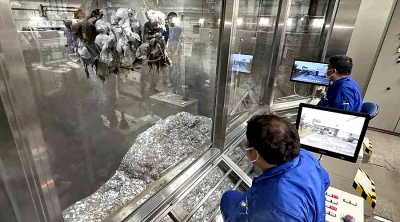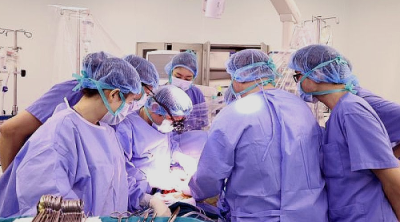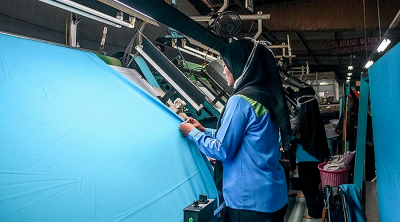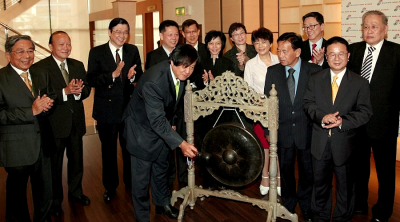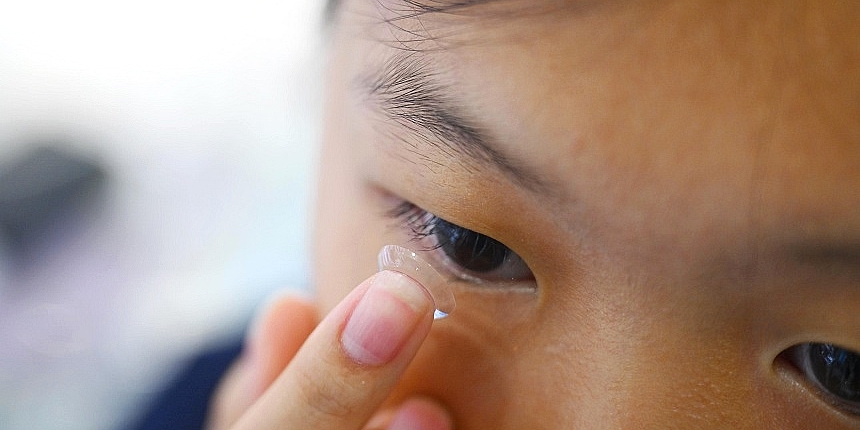
SINGAPORE: Secondary 1 student Michaela Wang, 13, started wearing contact lenses three years ago, when she was in Primary 4.
With the onset of myopia, she began using spectacles at the age of 10, but switched to daily disposable contact lenses within a month.
Her soft contact lenses are intended to not only address myopia, but also control the condition in children.
Myopia control involves slowing the progression of myopia, or short-sightedness, through means such as specially designed contact lenses or spectacles, or atropine eye-drop treatments.
In contrast, standard spectacles and contact lenses aim to correct one’s vision, rather than prevent the acceleration of myopia, which hits peak progression during childhood.
Michaela’s transition to soft contact lenses was smooth.
She says: “I did not want to be seen in glasses. A lot of people, like me, feel they look better without glasses.
“At first, it was hard to put the contact lenses on; it took me an hour. Now, I don’t even need to look in the mirror to do it.”
Some vision-care companies in Singapore are reporting a rise in demand for myopia-control contact lenses – which can be soft or hard lenses – for children as young as eight.
Eyecare providers say growing awareness of myopia management is a contributing factor.
These contact lenses, while still a niche product, are worn by children to slow the progression of myopia, which typically stabilises in adulthood.
Taking prompt action to inhibit the worsening of myopia in children during this stage in their life when short-sightedness is most likely to deteriorate rapidly, will possibly be most effective, say experts.
The blurred vision of short-sighted children is corrected with standard, single-vision spectacles or contact lenses.
However, these vision aids do not address the progression of myopia.
Myopia-control contact lenses are specifically made with multiple focal powers within the lens, to curb the acceleration of the condition.
Regular contact lenses to correct vision, such as those used by adults, are seldom worn by young children, industry insiders say.
Mr Lee Kang Lian, president of the Singapore Optometric Association and an optometrist at eyecare provider OJO Optometrist, says it is rare to encounter children wearing standard contact lenses.
He adds: “I would not encourage children’s use of normal contact lenses as it does not bring them any benefit, compared with contact lenses designed for myopia control. Myopia progression peaks when children are young, often between seven and nine years old.”
Singapore has one of the world’s highest myopia rates. According to several studies by the Singapore National Eye Centre (SNEC), 10 per cent of Singaporean children will be myopic by age five, rising to 60 per cent by 12 years old and 80 per cent by age 18.
A recent scientific study involving 92 children aged five to 12 in a Spanish population showed that certain myopia-control contact lenses can slow the condition’s progression by up to 50 per cent.
The paper, authored by a team of researchers from Spain and Portugal, came out in February in Children, an international, peer-reviewed journal for children’s health which is published online monthly.
The researchers noted that the onset of myopia in early childhood is closely related to high myopia in adulthood.
High myopia – measuring −6.00 diopters (or 600 degrees) and more – is associated with a greater risk of retinal detachment, myopic macular degeneration and glaucoma, they wrote. In some cases, it can lead to blindness, they added.
The prevalence of high myopia – and the possible vision complications that come with it – is set to grow substantially worldwide, with its incidence expected to reach 516 million cases by 2030, the researchers wrote.
In Singapore, 20 per cent of young adults who are short-sighted will develop high myopia, putting them at risk of visual complications later in life, according to information available on the SNEC website.
CooperVision, a global contact lens manufacturer, has seen local demand for its soft myopia-control contact lenses for children double in five years.
Ms Dawn Lim, CooperVision’s general manager for South-east Asia, says its soft myopia-control contact lenses for children, MiSight 1 day, have seen a 100 per cent increase in sales in optical stores here since they were launched in Singapore in 2019.
“While children as young as eight years old can confidently apply and remove the lenses on their own, parents should ensure their children follow essential hygiene practices for contact lenses, such as thoroughly washing and drying their hands before handling their lenses or touching their eyes,” she says.
“Additionally, children should be reminded not to sleep or swim while wearing contact lenses.”
According to a CooperVision clinical trial, the daily disposable MiSight 1 day lenses can cut myopia progression by approximately 50 per cent, says Ms Lim.
MiSight contact lenses, which are sold in more than 30 countries, are targeted at children aged eight to 12 at the start of use.
The lenses, approved by the United States Food and Drug Administration, cost about S$80 (RM260) for a box of 30 single-use lenses.
CooperVision also manufactures hard myopia-control contact lenses, known as orthokeratology or Ortho-K lenses. These are worn overnight to temporarily reshape the cornea, allowing for clear vision during the day without the need for glasses.
CooperVision’s Paragon CRT brand of hard contact lenses for myopia control costs $2,000 and should be changed annually.
Experts say the eye infection rates for children using myopia-control contact lenses are generally low.
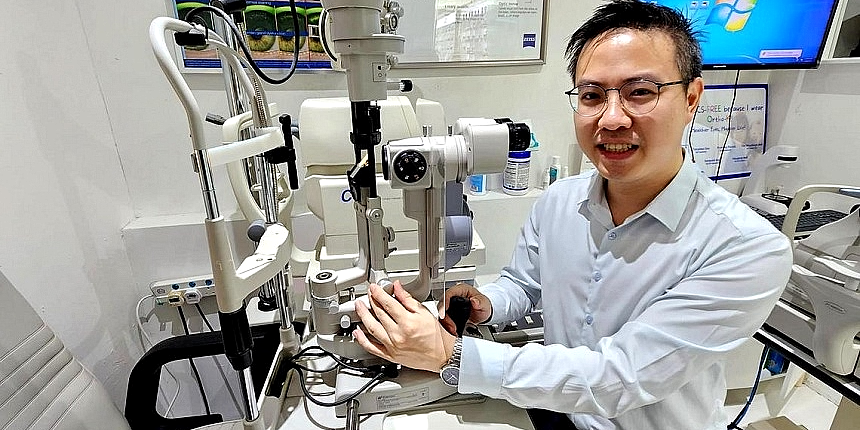
Dr Ng Wei Yan, consultant at the Paediatric Ophthalmology and Adult Strabismus Department at SNEC, says: “Current reviews have shown that infection rates of both hard and soft contact lenses for children are comparable with that of adults using the respective types of contact lenses.”
He notes that the occurrence of corneal infections in children range from five to 20 cases per 10,000 years of patient wear, according to published literature. That is considered low and comparable with adult data.
Dr Ng adds: “Proper education, hygiene, discipline and monitoring are important to keep these rates low.”
OJO Optometrist’s Mr Lee says that lifestyle factors – such as spending more time outdoors and taking breaks while doing work up close – also play a role in managing myopia in children, which should be addressed as soon as possible.
He says the Covid-19 pandemic, with its expansion of screen time under social-distancing conditions, brought about a spike in myopia.
“OJO has seen a 30 per cent increase in sales for hard and soft contact lenses for children from 2018 till now. There have been even more inquiries,” he says.
He adds that some children who take up co-curricular activities at school may prefer using contact lenses for their sports or dance performances.
Other providers have also seen rising interest in myopia-control contact lenses for children.
At Nanyang Optical, managing director Bernard Yang says that “greater awareness of myopia management solutions” has led to “a slight increase in interest in contact lenses such as Ortho-K, but spectacles are still more popular”.
Meanwhile, eyecare provider W Optics has seen an increase of more than 35 per cent in sales for soft myopia-control contact lenses for children between 2021 and 2023.
W Optics optometrist Tara Chee says it remains uncommon to see parents buying standard contact lenses for their children, such as those used by adults to correct their vision – which include disposable lenses used daily, monthly or fortnightly, as well as reusable ones.
Ms Chee says: “Based on my experience, children who begin wearing soft contact lenses are more likely to use those designed for myopia control.
“Even though there is greater commitment required by parents to ensure their children adhere to hygiene practices, parents feel assured about the ease of use and safety of these daily disposable lenses.”
Some young children may not have the dexterity to handle the lenses yet, or have to overcome the fear of putting a foreign object on the eyeball, she adds.
She suggests that societal norms are changing in some quarters, where there is growing acceptance of children wearing contact lenses, even though using spectacles is typically the default.
Ms Chee says: “Most of the time, these parents are contact lens users themselves and they might be more receptive to their children using contact lenses. The parents may have been stuck with wearing thick glasses when they were young.”
Michaela’s mother, civil servant Michele Sim, is one such parent.
“I am a contact lens wearer of more than 20 years and I felt that my myopia increased rapidly when I used to wear spectacles from primary school till university, when it reached 600 degrees,” says Ms Sim, who is in her 40s.
She agreed to Michaela switching quickly from spectacles to myopia-control contact lenses three years ago because she felt they might be more convenient since Michaela was enthusiastic about badminton at the time.
Michaela’s myopia is well under control. The myopia in her left eye has remained unchanged at 100 degrees for the past two years, while the vision in her right eye has increased only slightly, from 100 degrees in 2023 to 150 degrees now.
Ms Sim says she regularly spends about $156 for two boxes of daily myopia-control contact lenses for Michaela, which last a month. In contrast, the first pair of spectacles she got her daughter cost more than $200 and would have lasted much longer.
Ms Sim says: “It’s costly but it’s something that I choose to invest in, as it is important to take care of our eyes.”
ADVERTISEMENT
ADVERTISEMENT






